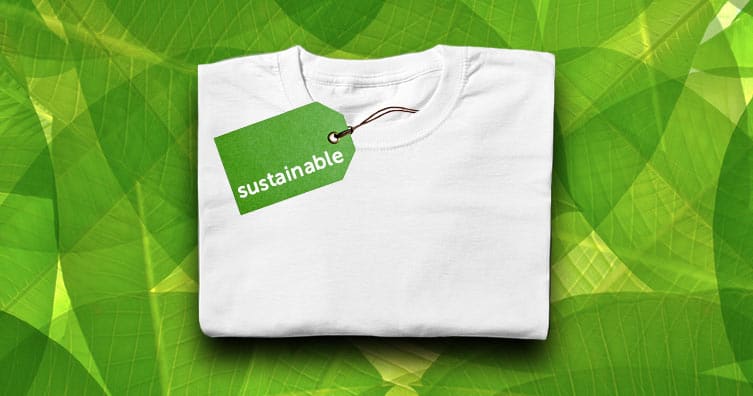Remain Ahead of the Curve by Exploring Innovative Style Trends
In a market as dynamic as fashion, remaining in advance includes more than just adhering to current fads-- it demands an exploration of technology. The merging of modern technology and fashion heralds a new era of consumer involvement.

Welcoming Smart Textiles
In recent times, the style market has actually seen a transformative shift with the combination of wise textiles, an advanced technology that blends innovation with textile. This advancement represents not just a blend of visual appeals and performance yet likewise a considerable leap towards sustainability and customization in vogue. Smart fabrics, additionally called e-textiles, installed sophisticated electronic devices such as sensors and conductive strings within the fabric, allowing garments to communicate with the environment or the wearer.
These fabrics are designed to keep track of physiological parameters, such as heart rate or body temperature level, supplying real-time health and wellness analytics. Beyond wellness applications, smart fabrics are also being made use of for flexible garments, which can transform color or pattern in reaction to ecological stimulations, therefore offering a vibrant fashion experience.
Moreover, the development of energy-harvesting fabrics that produce power from movement or sunshine is leading the way for self-sufficient wearable innovation. This advancement is interesting eco mindful consumers and developers aiming to decrease the eco-friendly impact of style. As study and development in this area breakthrough, wise fabrics are expected to end up being significantly prevalent, improving the landscape of contemporary style with their multifunctional abilities.
The Rise of 3D Printing
Changing the production landscape, 3D printing has actually arised as a game-changer in the apparel industry. This advanced modern technology has actually allowed designers to press the borders of creative thinking, creating elaborate and customized garments that were formerly inconceivable. By leveraging digital style and additive production, 3D printing assists in the production of intricate geometries and patterns, allowing developers to experiment with new structures and structures.
A remarkable advantage of 3D printing in vogue is its capability to create on-demand, lessening waste and decreasing supply demands. This effectiveness not just enhances manufacturing processes but additionally permits quick prototyping, allowing designers to bring their visions to life in a shorter duration. Furthermore, 3D printing supports customization to a level unmatched by conventional techniques, using unique styles and individualized fits customized to specific consumer preferences.
The rise of 3D printing has additionally democratized fashion, making it accessible to arising developers who can currently fabricate high-grade items without considerable financial investment in standard production framework. As innovation continues to development, the fashion business is positioned to harness the complete potential of 3D printing, exploring new materials and methods that will unquestionably redefine how fashion is developed and generated.
Sustainable Fashion Developments
As the fashion industry grapples with the pushing need for environmental obligation, lasting fashion technologies have actually emerged at the forefront of transformative adjustment. The growing understanding of eco-friendly impact has sustained a shift towards even more eco-conscious practices and materials. Developers and brands are now focusing on sustainability, incorporating approaches that lessen waste and minimize carbon footprints.
One significant growth is the rise of round fashion, which highlights recycling and upcycling to expand the lifecycle of garments. This technique not only decreases waste yet also urges consumers to embrace a more conscious approach to clothes intake. In addition, making use of lasting materials, such as organic cotton, hemp, and recycled polyester, has actually obtained traction. These products call for much less water and energy during manufacturing, significantly minimizing environmental influence.
An additional development depends on the adoption of innovative dyeing methods that make use of waterless procedures or natural dyes, therefore minimizing the huge quantities of water and chemicals generally used in fabric dyeing. Furthermore, improvements in biotechnology have actually brought about the production of lab-grown leather and fabrics, supplying eco friendly and cruelty-free alternatives to traditional products. With these introducing initiatives, the garment industry is making significant strides towards a more sustainable future.

Tech-Integrated Garments
Tech-integrated apparel represents a revolutionary blend of fashion and modern technology, improving just how individuals interact with their apparel. This cutting-edge domain name is noted by the addition of smart fabrics and embedded digital elements, improving both functionality and visual charm. From physical fitness trackers embedded in sportswear to warmed jackets controlled by means of smartphone applications, tech-integrated clothing provides customers unmatched convenience and adaptability.
Pioneering brands are driving this pattern, concentrating on developing garments that respond to environmental stimuli or individual commands. For instance, some garments go to this website can transform color or pattern in feedback to temperature shifts, while others incorporate biometric sensing units to keep an eye on health metrics like heart price or stress and anxiety degrees. The smooth integration of innovation into textiles likewise encompasses ecological sustainability, with efforts to create self-cleaning materials or garments that adapt to climate condition, therefore minimizing the need for several layers.
Moreover, the introduction of wearable modern technology is not simply restricted to garments but encompasses devices like watches and glasses, more broadening the scope of tech-integrated style. try this out As the market remains to introduce, the potential for customization and personalization in clothing expands, using consumers special, tech-enhanced fashion experiences that deal with their individual requirements and choices.
Future of Virtual Style
Over the last few years, the future of virtual fashion has actually emerged as a transformative force within the sector, leveraging innovations in electronic technology to redefine just how style is created, experienced, and consumed. By integrating enhanced reality (AR), digital fact (VR), and 3D layout tools, developers can now craft immersive and interactive experiences that transcend typical fashion boundaries. Virtual fashion enables the development of garments that exist exclusively in digital settings, providing countless opportunities for advancement without the restrictions of physical production.
This digital change not just presents chances for innovative expression but additionally addresses sustainability problems integral in typical style practices. Cape Town Sustainable Fashion. By removing the requirement for physical resources, online fashion minimizes waste and lessens carbon footprints. Furthermore, the rise of virtual fashion straightens with the enhancing customer need for personalized and unique experiences, as virtual garments can be tailored and customized to individual choices with convenience

Verdict
The garment industry's future depend on the integration of lasting methods and innovative modern technologies - Cape Town Sustainable Fashion. Smart fabrics and tech-integrated apparel are boosting performance, while 3D printing provides possibilities for modification and waste reduction. Sustainable style, via circular strategies and eco-friendly products, shows a commitment to environmental stewardship. In addition, Learn More Here digital style is poised to redefine consumer communications. Adapting to these trends is crucial for brand names looking for to remain relevant and affordable in this rapidly developing landscape.
In current years, the style industry has witnessed a transformative shift with the integration of wise textiles, an innovative technology that mixes modern technology with material.As the style sector grapples with the pressing demand for ecological responsibility, sustainable style advancements have actually arised at the leading edge of transformative change.In recent years, the future of virtual style has actually arised as a transformative pressure within the market, leveraging innovations in digital technology to redefine just how style is created, experienced, and taken in. The rise of virtual fashion lines up with the raising customer demand for tailored and one-of-a-kind experiences, as digital garments can be tailored and customized to specific preferences with convenience.
The style market's future lies in the assimilation of sustainable techniques and cutting-edge innovations.
Comments on “The Potential of Cape Town Sustainable Fashion in the Global Market”